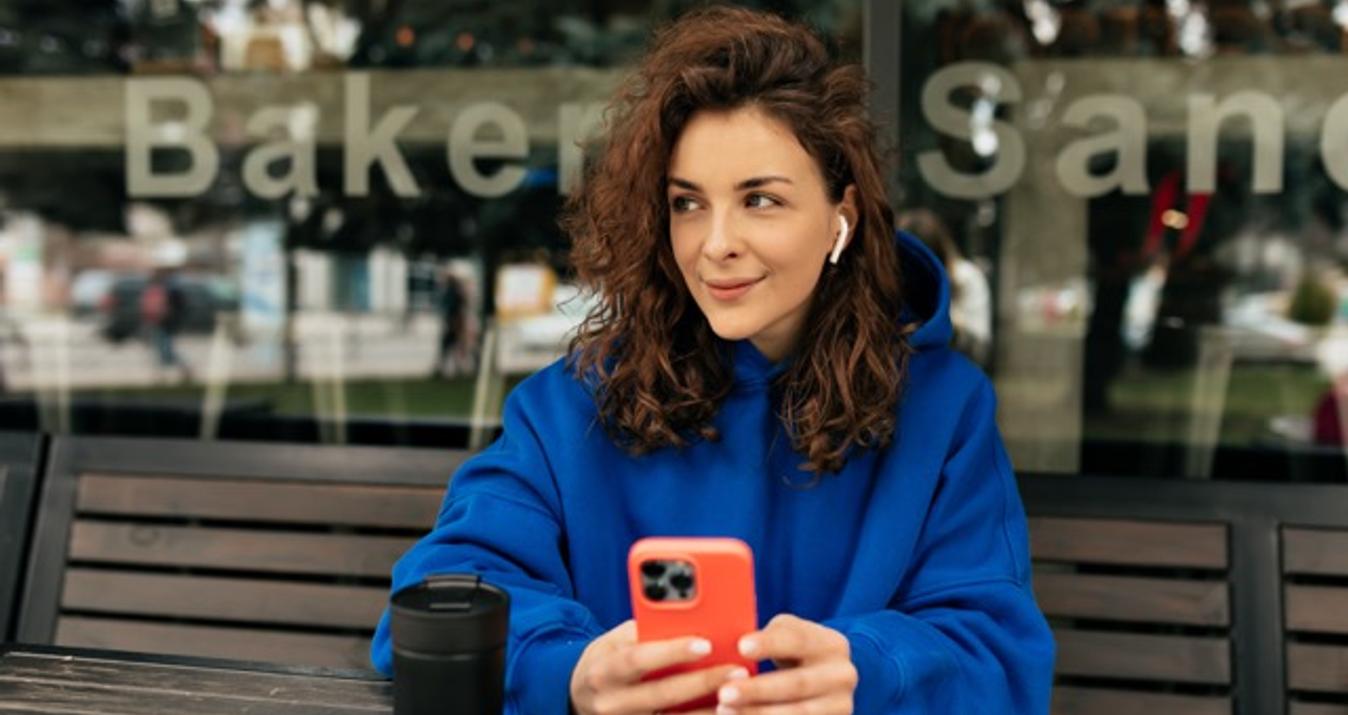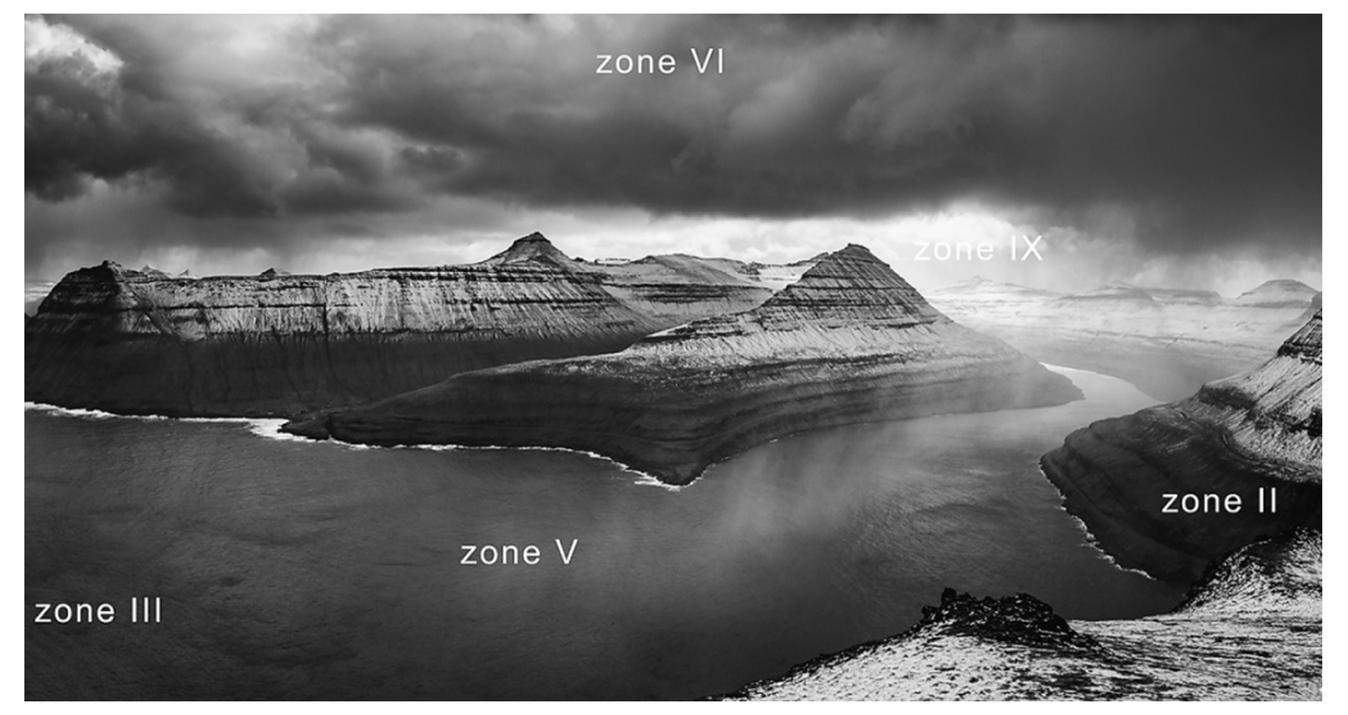How to Photograph Fireflies: Secrets to Catching Their Glow
December 12, 2024

Struggling to capture fireflies? Discover the best camera settings, techniques, and tips for photographing fireflies at night like a pro.
To take his firefly photos, Sriram combined 50 individual 19-second exposures, reflecting on the firefly flashes made over 16 minutes in the forests of the Anamalai Tiger Reserve.
Wildlife photographers love to capture fireflies' glow, but catching their light in a shot is not easy. You need patience, knowledge of your surroundings, and the willingness to adjust your camera settings correctly.
This article will cover everything you need to know about photographing lightning bugs, including equipment and camera settings, approaches, and ethical issues. So, how to photograph lightning bugs? From the more experienced photographer to the newcomer, you will find ideas to capture the beauty and expressiveness of these small, brilliant creatures.
The Allure and Magic of Fireflies
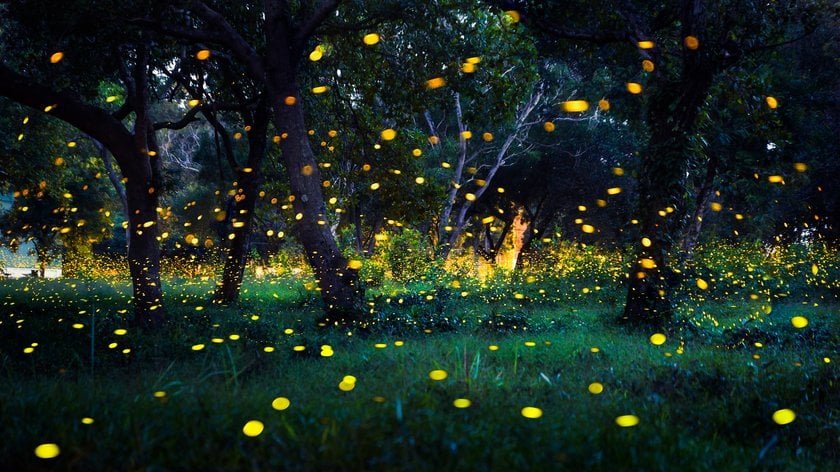
Fireflies, known as lightning bugs, produce bioluminescence to attract mates. You need technical expertise and knowledge of the species' behavior to capture one. Flashing light, often caused by males trying to find females, is the transience that makes shooting them so difficult.
Each species has a distinctive light pattern, sometimes constantly glowing and sometimes periodic flashes, which can affect how you approach photography. For the best shot, find a calm, natural place far away from the hubbub of life in any city.
Protecting Fireflies: Safe & Ethical Photography

Before discussing the technical aspects of lightning bug photography, you should realize their fragility. Firefly populations are falling due to habitat loss, light pollution, and climate change.
Best Practices for Ethical Firefly Photography:
Limit your presence. To avoid upsetting the fireflies, monitor your time spent in their environment. Stay on paths and avoid sensitive areas.
Minimize light pollution. Fireflies use natural light to communicate. The way you photograph can decrease the interruption. Don’t use strong white lights; opt for a red filter.
Don’t capture fireflies in jars. Gathering fireflies to get a better image can be stressful. Enjoy them the way they are.
Try long exposures. To follow the natural brightness of fireflies, long exposure is used. This strategy reduces the need for intrusive lighting and gives a more authentic image.
Photographers who want to capture the beauty of fireflies can do so safely (without killing them) if they follow proper techniques.
Fireflies Photography Basics
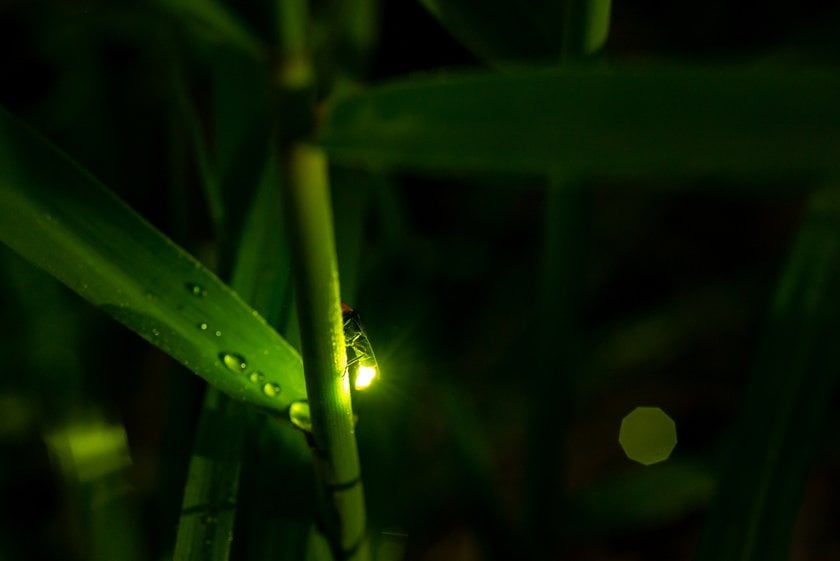
“How to photograph fireflies at night?” “Which is the best camera setting for the perfect shot?” — a common question among shooters. Photographing fireflies at night and in low light requires specialized equipment. This chapter speaks about some important equipment and settings for creating awesome images.
Gear Up for Nature’s Light Shows
To snap these lightning creatures, you will need a combination of specialized and simple photographic equipment.
Recommended equipment:
Tripod. Since long-exposure photography involves slow, luminous movement, you need a solid tripod to keep your camera still while you capture. Without one, you risk blurry photographs.
Remote shutter release. This feature lets you snap the image without touching the camera, reducing the chance of shaking while taking a long exposure.
Wide-aperture lenses. If you have a low-light camera, a lens with a bigger aperture (f/1.4 to f/2.8) can capture more light.
Extra batteries and memory cards. Long exposure durations will drain your battery quickly, so pack spares and more memory cards.
Optional accessories:
Headlamps with red filters. It is far less disruptive to fireflies and protects your night vision.
Backup flashlights. Going in the dark, a flashlight with a red filter won't disturb the fireflies.
Weatherproof gear. Bring appropriate protective clothing for yourself and your equipment due to conditions.
Dive into Camera Settings for Lightning at Night and Fireflies

The challenge is to get that balance right. Before you grab your camera and start your adventure, read recommendations on “how to photograph lightning bugs.” Adjusting ISO, shutter speed, and aperture for low light:
ISO. To take full advantage, you’ll generally need to use a higher ISO for firefly photography — somewhere between 800 and 3200. Catching the glow may involve a higher ISO, but be warned that getting too much will introduce noise (grain) in photographs.
Shutter speed. The camera's sensor will only catch the brief 'lights' of the firefly on a long exposure (100–300 seconds). The longer the exposure, the more light you gather. Test to avoid under or overexposure or excessive blur.
Aperture. Use a wider aperture (f/1.4 to f/2.8) to let in more light. This helps you catch the firefly's shimmering without making the backdrop too dark.
Tips for Focusing on Dark Conditions
One of the most difficult parts of firefly photography may be focusing on the dark. Here are a few strategies:
Manual focus — good in low-light situations. Try to choose and fasten a nearby object, such as a tree or distant light source.
Focus at infinity — very useful when the fireflies are far from the camera.
After all, patience and following these tips will allow you to get a photo of fireflies at night.
Using Long Exposures to Capture Multiple Glows
You need long exposures to capture a firefly’s dynamic light show. Their light is short-lived; a single firefly's flash lasts a fraction of a second, but successive exposures of the same area allow for multiple firefly flashes in one picture, achieving amazing images.
Helpful Tips for Your Shoots
Fireflies are extremely unpredictable and sensitive to environmental changes. Without the right pre-planning (e.g., picking where to place them, knowing when to shoot, etc.), you’re laying yourself to miss a good shot. With these guidelines, you know how to catch a shimmering in motion.
Aspect | Tips |
Location Scouting | Seek low-light pollution areas, such as fields, woodlands, or marshes. Research firefly hotspots or organize firefly-watching events for better access. |
Ideal Timing and Conditions | Choose warm, humid nights in late spring or early summer. Monitor weather forecasts and avoid rainy or windy nights. |
Blending Natural and Artificial Light | Use a wide aperture and long exposure to balance natural and firefly light. Keep artificial light to a minimum to preserve the natural ambiance. |
Each piece of advice would be useful for photographers who want to succeed in taking wonderful-looking pictures of these creatures.
After the Shooting: Editing Tips for Firefly Photos
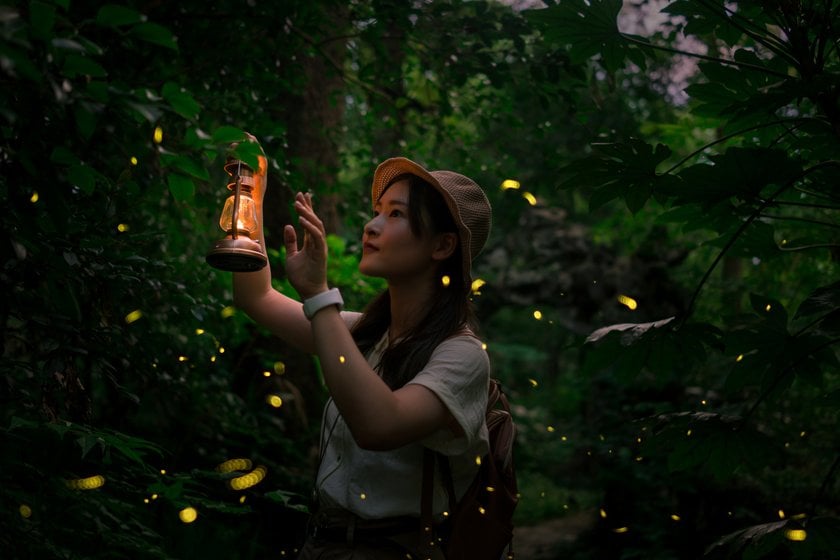
After a successful firefly shot, your work is not done. Now it's time to edit your images to bring out the shine and improve your picture.
Adjust exposure. In low lighting, firefly images can sometimes appear underexposed. Later in your workflow, you can use a photo-editing program to add extra pop to the shot.
Boost hues. The glow from firefly light has a warm yellowish tint, but you can adjust how bright or saturated you like the glow to be.
Noise reduction. Your post-processing software can counter the noise that high ISO settings can make in your images, but noise-reducing methods are available if you lose clarity.
Don’t delete the photo immediately. Try our tips, play with light contrast and hues, and see that sometimes, even a bad shot can be saved.
Explore the Future of Noise Reduction with NoiselessAI
Try It in Luminar NeoThe Bottom
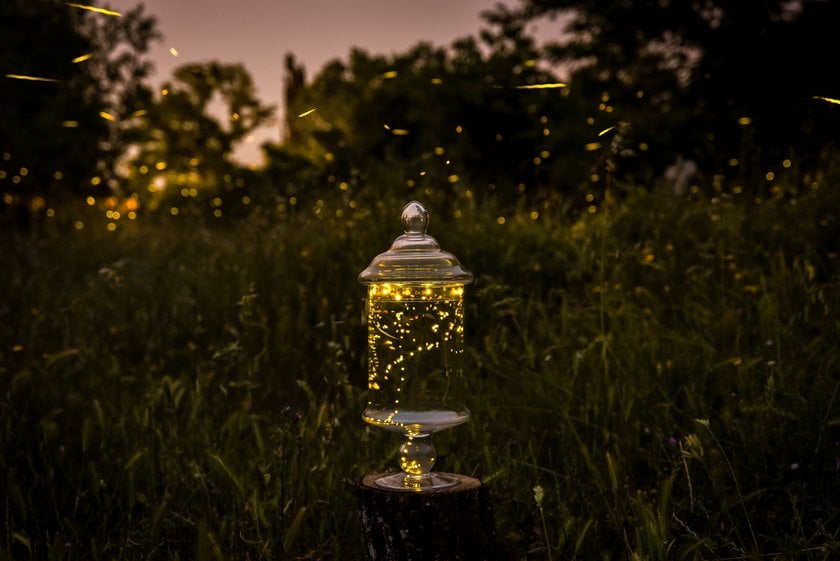
Firefly photography is a very rewarding pursuit that requires patience, technical know-how, and an appreciation for nature's mysterious beauty. If you can learn the correct gear, camera settings, and ethical norms, you can catch these brilliant insects in all their breathtaking glory.
FAQ
What Is The Best Time to Photograph Fireflies?
Shooting fireflies in humid, warm nights in late spring or early summer, depending on where you live. Fireflies are most active at night, just at dusk and before midnight.
Can I Use a Smartphone to Photograph Fireflies?
Sure! But the results won’t be as good as those from a DSLR or mirrorless camera. Getting enough glow capture without control over smartphones' ISO, shutter speed, and aperture is hard.
How Do I Avoid Overexposing the Glow of Fireflies?
To avoid overexposing, use manual settings, a low ISO (800 to 1600), a long exposure period (10-30 seconds), and a large light stop (f/1.4 to f/2.8). Play with the different exposure periods to determine the sweet spot between the light and the negativity of the surroundings.
What Lenses Work Best for Firefly Photography?
To capture more of the sky and the sparkle of fireflies, you need a wide lens and aperture (f/1.4 - f/2.8), ranging from 24mm to 50mm.
How Do I Safely Approach Fireflies For Close-Up Shots?
While taking close-up photographs, light-sensitive fireflies don’t need to be swatted or disturbed. Use a camera with manual focus to focus an image without losing it in the background.


